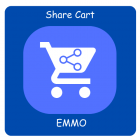Understanding Google PageRank in 2024: Insights from Recent Search Trends

Understanding Google PageRank in 2024: Insights from Recent Search Trends
In 2024, Google PageRank continues to play a vital role in determining how web pages rank in search results. Recent leaks and studies provide valuable insights into how Google evaluates websites. These insights can help you optimize your online presence and improve your website's visibility.
Table Of Content
Understanding PageRank: The Backbone of Google's Search Results
PageRank is a core Google algorithm that assesses webpage importance by analyzing the quality and quantity of incoming links. Think of links as votes—pages with more high-quality links are seen as more valuable in search results.
What Does PageRank Do?
- Identify Valuable Content: PageRank determines which pages are the most useful and relevant based on links from reputable sites.
- Reward High-Quality Backlinks: Pages that naturally earn links from trusted sources are prioritized, leading to higher rankings in search results.
- Discourage Link Manipulation: By focusing on quality over quantity, PageRank prevents websites from artificially inflating their rankings through spammy link-building practices.
- Organize Content by Authority: The algorithm creates a hierarchy of webpages, helping Google identify which pages are the most authoritative on specific topics.
The History of PageRank Scores
Google used to display PageRank scores, ranging from 0 (PR0) to 10 (PR10), allowing SEOs to gauge webpage importance via the Google Toolbar. The score operated on a logarithmic scale—each increase represented a fivefold increase in significance. For instance, a PR4 page was 25 times more valuable than a PR2 page, challenging the notion that rankings increase linearly.
In 2016, Google retired the toolbar and stopped showing public PageRank scores. This change came because SEOs became overly focused on the metric. However, the PageRank algorithm continues to play a vital role in search rankings today.Summary Table of Key Points
| Aspect | Description |
|---|---|
| Function | Measures webpage importance through link analysis |
| Link as Vote | High-quality links indicate value |
| Quality vs. Quantity | Prioritizes genuine backlinks over manipulative tactics |
PageRank remains an integral part of SEO strategy. Understanding it can help you build better links and improve your website's visibility. If you have previously overlooked this algorithm, it’s time to reevaluate its importance in your SEO efforts.
Understanding PageRank: The Key to SEO Success
PageRank is a crucial component of SEO that measures the importance of a webpage based on incoming links. It evaluates both the quantity and quality of these links, factoring in the credibility of the sources providing them. This "link juice" flows from high-authority pages to lower-authority pages, creating a hierarchy of importance.
When Google’s founders created the PageRank algorithm, they recognized that links serve as votes of trust and authority. They stated that not all links are equal; a link from a high-authority page (like a PR6) carries more weight than one from a lower-authority page (like a PR2).
Additionally, the more links a page has, the weaker each individual link becomes. This dilution means it's better for your SEO strategy to focus on fewer, higher-quality links rather than many low-quality ones.
Table: PageRank and Link Authority
| PageRank Score | Authority Level | Impact on SEO |
|---|---|---|
| PR10 | Extremely High | Best for driving traffic |
| PR8-PR9 | High | Excellent for boosting rankings |
| PR5-PR7 | Medium | Good for gaining visibility |
| PR3-PR4 | Low | Minimal impact |
Reviewing Title Tags for CTR Improvement
To see if your title tag changes are effective, check your Click-Through Rate (CTR) using Google Search Console (GSC):
- Open GSC and go to “Performance.”
- Select "Average CTR" and "Pages."
- Monitor each page’s CTR. If it improves, your title tags are working well. If not, revise them based on search intent, keywords, and user appeal.
Improving Low-CTR Title Tags
If your CTR doesn’t improve, consider testing alternative title tags. Focus on clarity, keyword relevance, and engagement potential. For more ideas, use an AI Title Generator. Just enter your topic or keyword, select “Get my titles,” and pick a version that stands out.
The Evolution of Google PageRank: A Timeline
Google PageRank, developed by Larry Page and Sergey Brin, revolutionized how we perceive web importance. Here's a quick look at the key milestones in its history from 1998 to 2024.
| Date | Event |
|---|---|
| April 1, 1998 | Page and Brin publish “The Anatomy of a Large-Scale Hypertextual Web Search Engine.” |
| September 1, 1998 | They file the first PageRank patent. |
| September 4, 1998 | Google Inc. is incorporated. |
| December 11, 2000 | Launch of the Google Toolbar, allowing users to see PageRank scores. |
| June 17, 2004 | Google files the Reasonable Surfer patent. |
| October 12, 2006 | Filing of the “seed sets” patent. |
| March 8, 2016 | Google announces the retirement of the Google Toolbar. |
| March 27, 2024 | Leaked documents reveal that PageRank is still used internally. |
Birth of PageRank
PageRank emerged from the belief that a webpage's relevance can be gauged by its link popularity. The first patent for PageRank, filed in September 1998, outlined how links serve as a citation graph. This concept remains fundamental to Google’s search algorithm today, helping determine the importance of pages on the web.
The Role of the Google Toolbar
In 2000, Google introduced the Google Toolbar, which displayed PageRank scores to users. While this transparency was useful, it led to an unhealthy obsession among SEO professionals aiming to inflate PageRank scores. Many resorted to unethical practices like buying links, which Google has since penalized through manual actions. It’s crucial to avoid these tactics to maintain a website's integrity and search ranking.
Patent Developments
The original PageRank patent expired in 2018 and wasn’t renewed. A former Google employee confirmed that the original algorithm stopped being used in 2006. However, a new patent filed in 2006 introduced the concept of "seed sites," which are high-quality pages that influence the ranking of others. Although it didn't explicitly reference PageRank, the SEO community regards it as a modification of the original algorithm.
Retirement of the Google Toolbar
In December 2013, Google ceased updates to its PageRank scores and retired the toolbar in 2016. This move eliminated the public measure of webpage authority, making it harder for SEO experts to manipulate rankings. Without this tool, SEO professionals had to rely on other methods to assess their site's authority.
Insights from Google's API Leak
In March 2024, leaked internal API documents confirmed that Google still utilizes various versions of PageRank. This information suggests that Google values link importance when ranking pages. Here are some of the PageRank versions mentioned in the leak:
Key Factors Impacting Google PageRank in Modern SEO
Google’s PageRank system measures a webpage's authority and relevance, with a primary focus on link quality and structure. While links remain essential to PageRank, the specifics of what contributes to a strong ranking have evolved. Here’s a look at today’s most influential factors and best practices.
1. Link Quality Over Quantity
- High-Quality Backlinks: Links from credible, high-authority sites significantly enhance your PageRank. Instead of focusing on sheer volume, target backlinks from sites relevant to your content. For example, if your page is about digital marketing, links from reputable marketing blogs are more beneficial than unrelated sites.
- Natural Link-Building: Avoid manipulative link-building practices, as Google penalizes attempts to manipulate PageRank artificially. Anchor text should be varied and relevant, as excessive exact-match keywords can lead to penalties. Regularly analyze your anchor text distribution to ensure diversity.
2. Click Probability – “Reasonable Surfer” Model
- Placement Matters: Links in visible and engaging spots, like the main content area, are more likely to be clicked and carry more weight than those in footers or sidebars.
- Engagement Signals: Google’s model assumes that links with higher user interaction, such as those on popular or engaging pages, likely contribute more to PageRank.
3. Internal Links and Site Structure
- Strategic Internal Linking: Internal links guide PageRank flow through your site and are crucial for connecting related content. For instance, linking to valuable resources or lesser-linked pages (often called “orphaned” pages) can improve their visibility.
- Navigation and Hierarchical Structure: A well-organized internal link structure aids in Google’s crawlability. Use tools like Google Analytics or SEMrush’s Site Audit to assess and optimize your site’s linking strategy.
4. Nofollow Links and Link Equity
- Nofollow as a Signal: Nofollow attributes instruct Google not to pass PageRank traditionally. Although Google now treats them as “hints” rather than strict directives, use them carefully on links to non-relevant or less authoritative sites.
- Best Practices in Link Building: Focus on a balanced link profile that combines dofollow and nofollow links. Excessive nofollow links, particularly on key content, can limit PageRank flow within your site.
Pro Tip: Regular Link Analysis
To maintain an SEO-friendly profile, regularly assess your backlinks, anchor texts, and internal link structure. Tools like SEMrush and Google Analytics can provide insights into your link quality, helping you refine strategies to boost SEO without risking penalties. Additionally, ensure that key pages remain accessible and linked properly, as broken links or “orphaned” pages can disrupt PageRank distribution.
Tip
To enhance your eCommerce store’s performance with Magento, focus on optimizing site speed by utilizing Emmo themes and extensions. These tools are designed for efficiency, ensuring your website loads quickly and provides a smooth user experience. Start leveraging Emmo's powerful solutions today to boost customer satisfaction and drive sales!
Revised Title: Why PageRank Still Matters for SEO Today
PageRank remains a critical tool for SEO. Though some believe it’s outdated, Google still uses PageRank to rank sites. In 2017, Google’s Gary Illyes confirmed that PageRank, among other factors, is actively part of the algorithm. A 2024 leak showed even more variations of PageRank, confirming Google’s commitment to evolving this metric over time.
Understanding how PageRank works helps you make strategic SEO moves that boost organic visibility. Here’s why it’s essential:
| Benefit of PageRank | SEO Advantage |
|---|---|
| Gauges website authority | Higher PageRank indicates trustworthy content |
| Evaluates link quality | Quality links improve rankings |
| Maps information flow | Proper interlinking increases PageRank distribution |
Using PageRank Effectively for SEO:
- Create link-worthy content that encourages external links.
- Structure your website with clear, logical interlinking.
- Focus on quality over quantity for backlinks.
FAQs
What is Google PageRank?
Google PageRank is an algorithm used by Google to rank web pages in search results. It measures the importance of web pages based on the quality and quantity of links pointing to them, helping determine their relevance for users searching on Google.
How Does PageRank Impact SEO in 2024?
In 2024, PageRank still plays a role in SEO, although it is now one of many ranking factors. PageRank continues to help search engines assess link quality and relevance, which is essential for ranking and traffic growth.
What Are the Key Factors Influencing PageRank?
Key factors influencing PageRank include the number of quality backlinks, the authority of linking sites, and the anchor text relevance. These help Google evaluate a page's trustworthiness and topic alignment.
How Can I Improve My PageRank?
To improve PageRank, focus on building high-quality backlinks from authoritative sites, creating valuable content, and improving internal linking structures. Regularly updating content and maintaining strong on-page SEO are also beneficial.
Does PageRank Still Matter in Today’s SEO Strategies?
Yes, PageRank is still relevant, although Google now uses hundreds of ranking factors. While not the sole determinant of rankings, PageRank contributes to assessing link value, which is important for SEO.
How Can I Check My Site’s PageRank?
Google no longer publicly displays PageRank scores. Instead, you can use third-party tools like Ahrefs, Moz, or SEMrush, which estimate a site’s authority based on similar backlink analysis techniques.
What Are the Recent Trends in PageRank and Link-Building?
Recent trends show a focus on link quality over quantity. Engaging content, building relationships for natural backlinks, and leveraging social signals are popular strategies for improving PageRank without spammy links.
Can Low-Quality Links Harm My PageRank?
Yes, low-quality or spammy links can harm PageRank, as Google’s algorithms may view these as attempts to manipulate rankings. It’s essential to build quality links and disavow any harmful ones.
What Role Do Internal Links Play in PageRank?
Internal links distribute PageRank across your site’s pages, helping important pages rank better. A well-structured internal linking strategy can enhance SEO and provide a better user experience by guiding visitors to relevant content.









